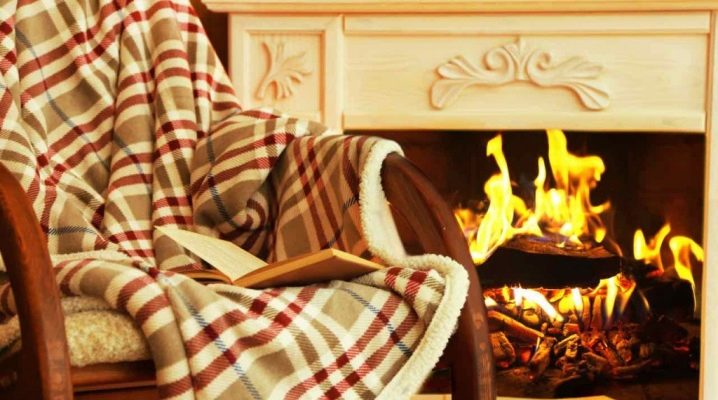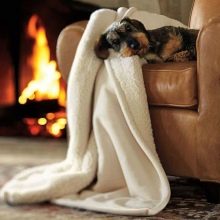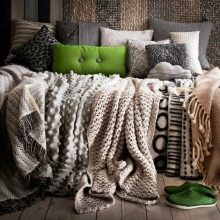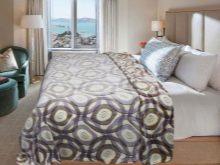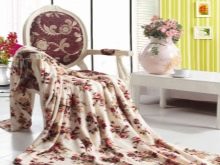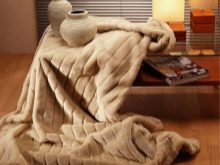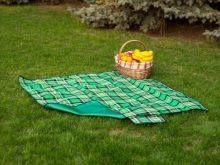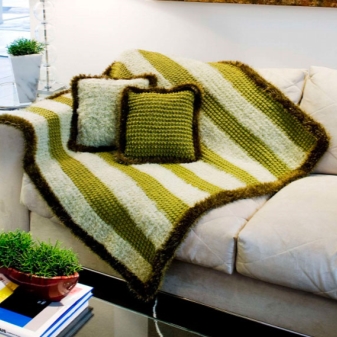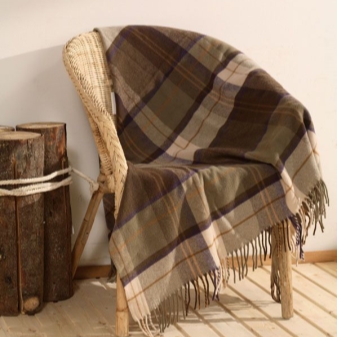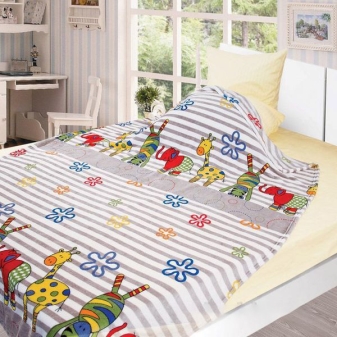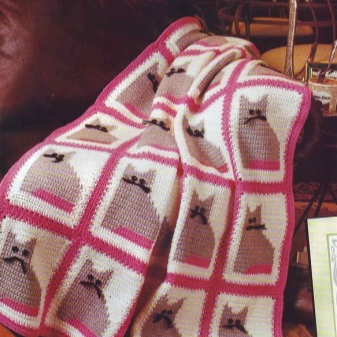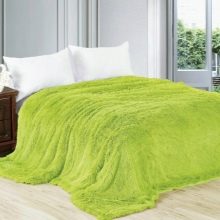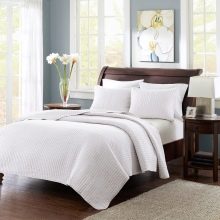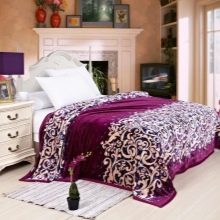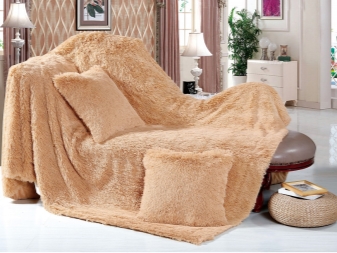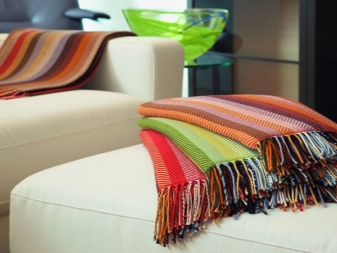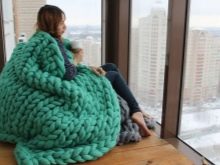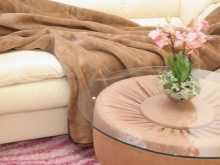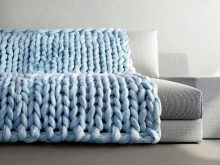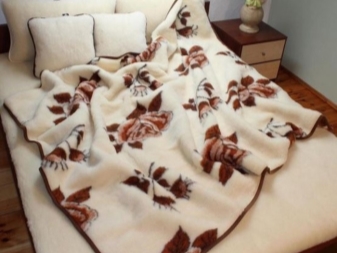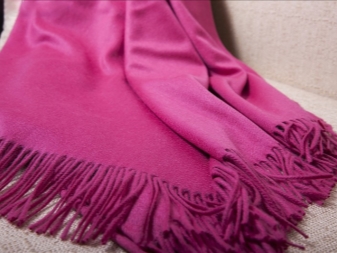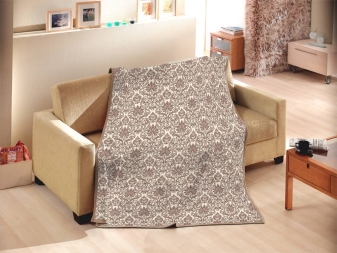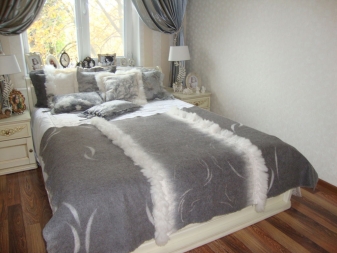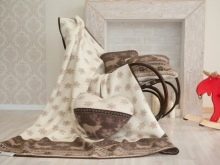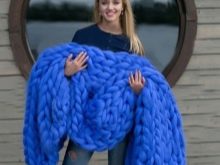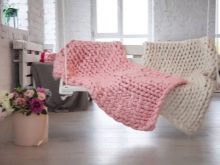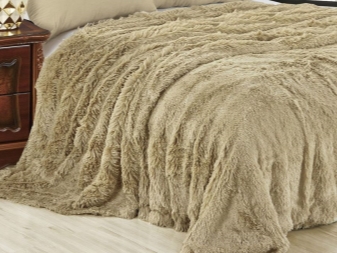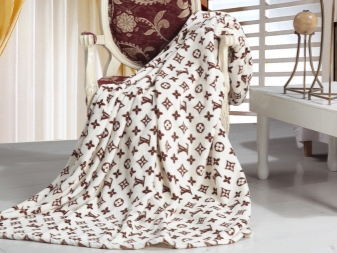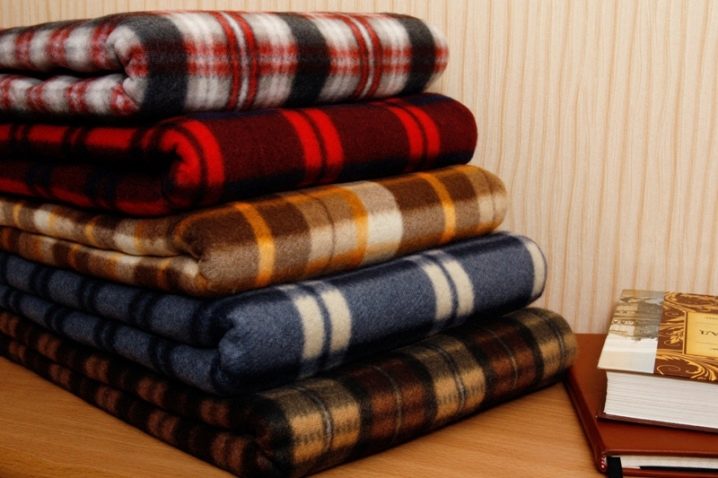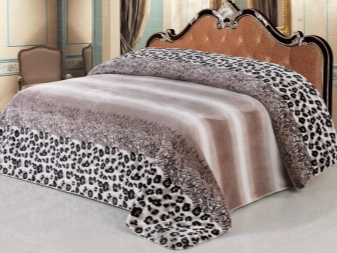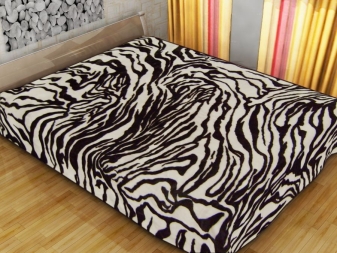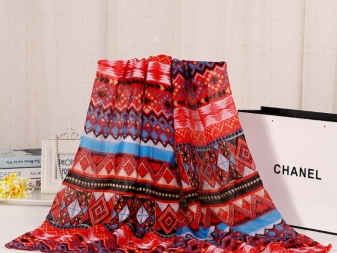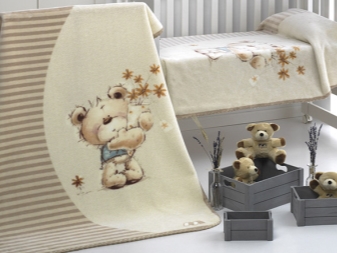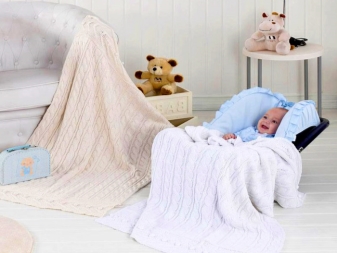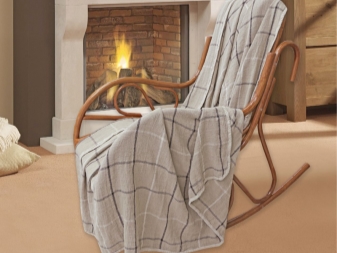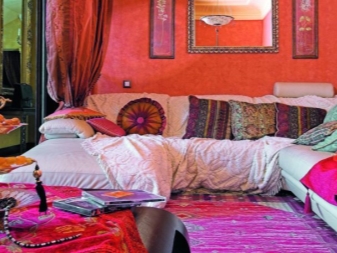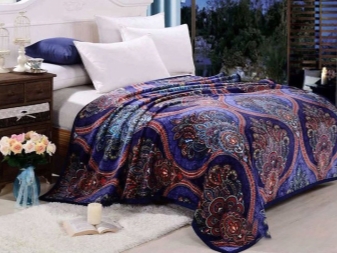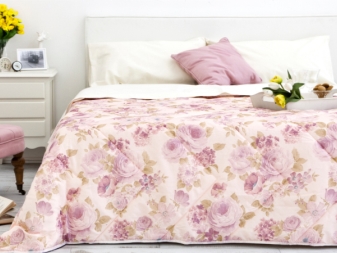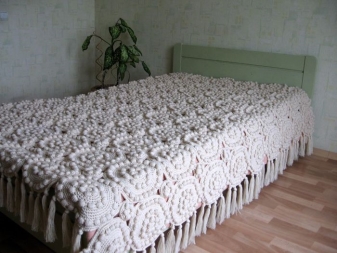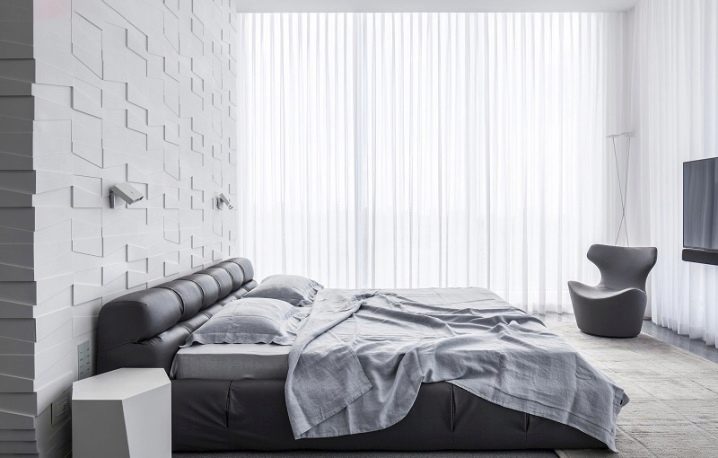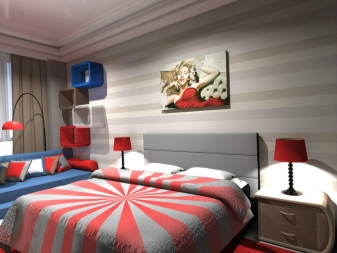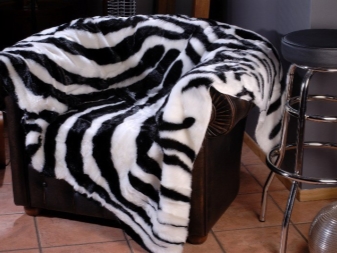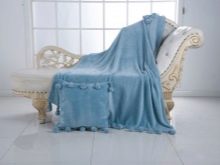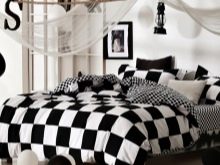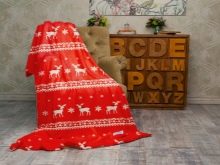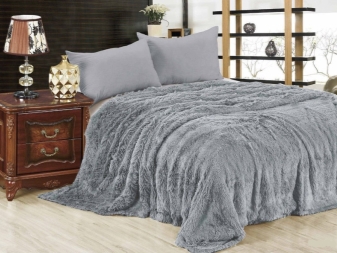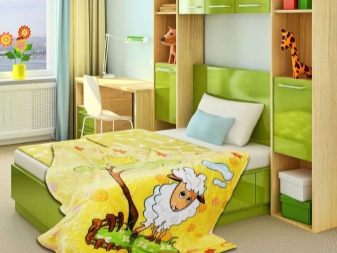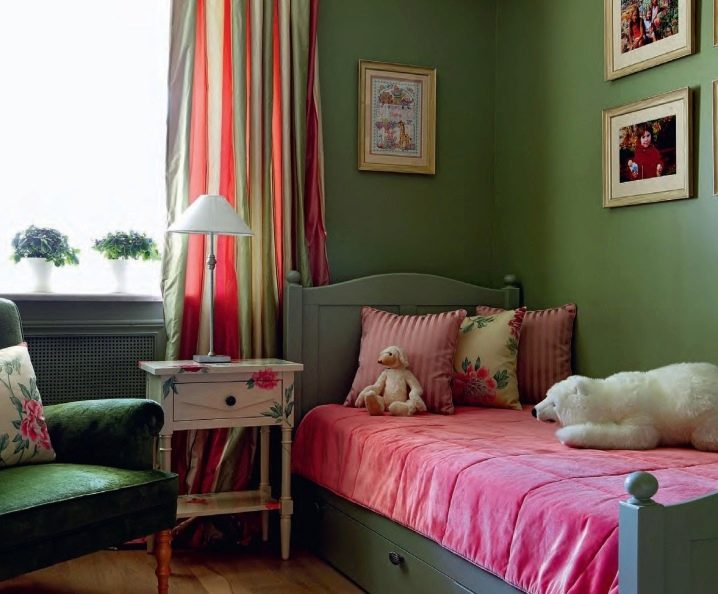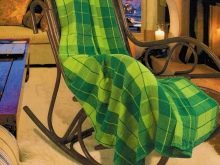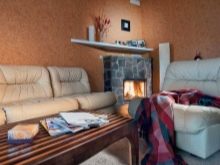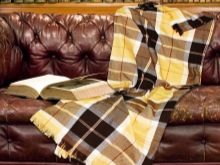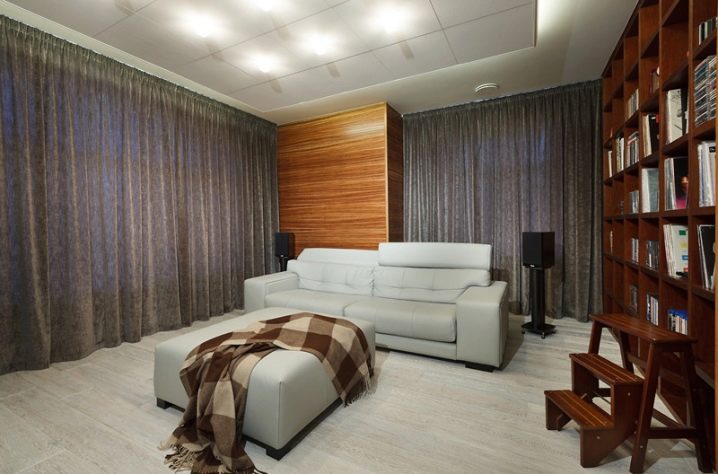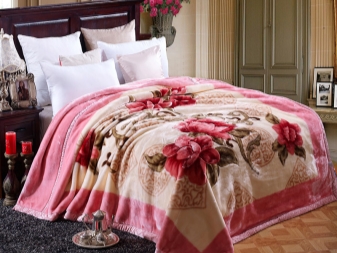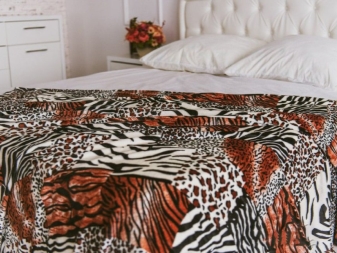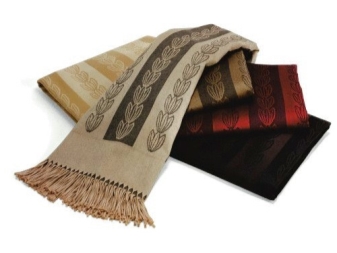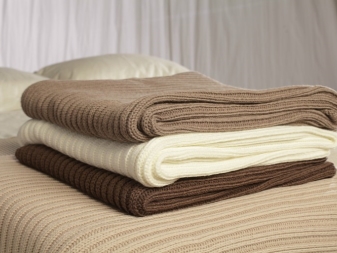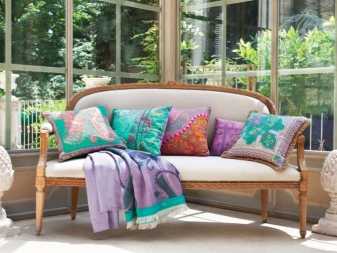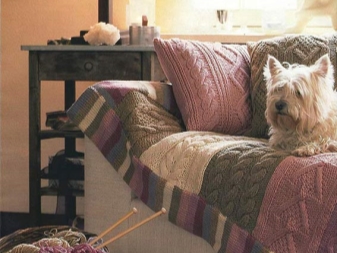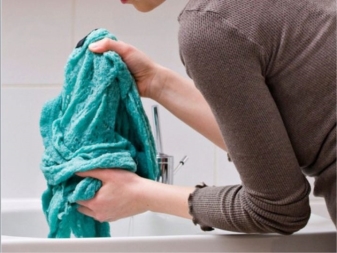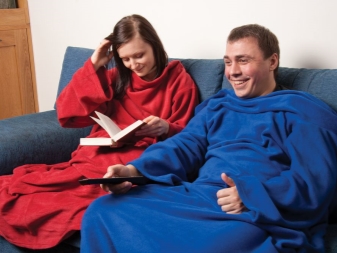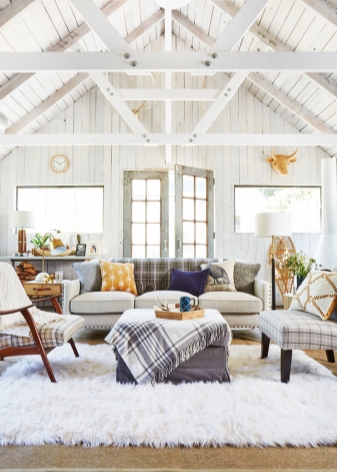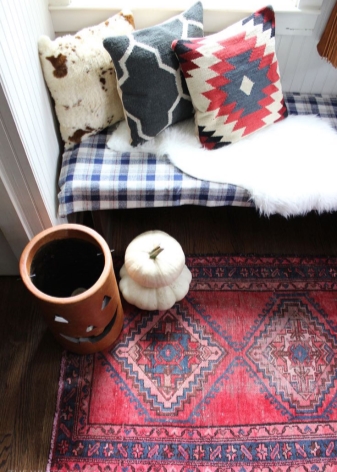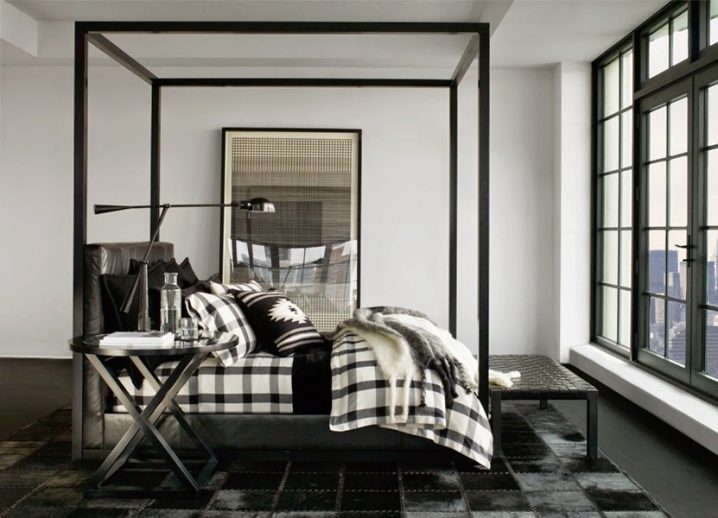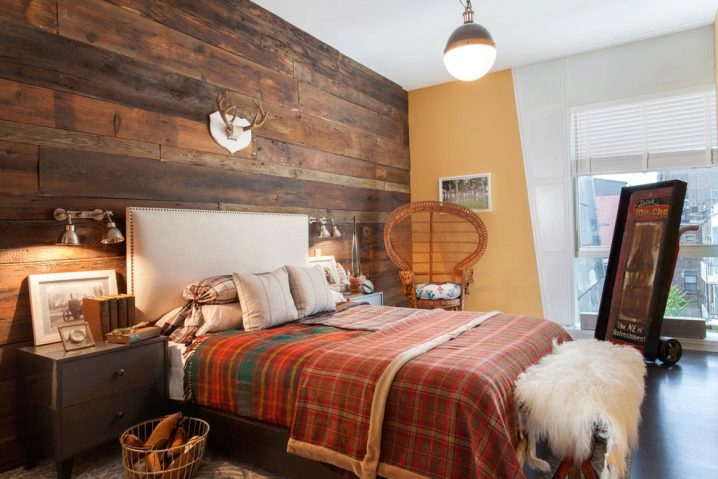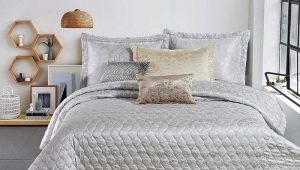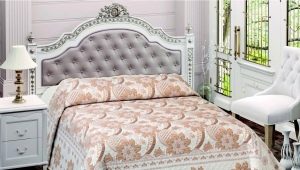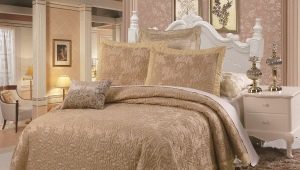How to choose the perfect blanket?
Blankets are usually used to bring comfort to the interior, to give it some kind of softness, comfort. However, in addition to the decorative role, rugs and other home textiles have another function - a practical one. On how to choose the perfect blanket, focusing on their needs and interior design, we take a closer look at this article.
Special features
If a blanket is usually used to protect bed linen from dirt and dust, a blanket is used to keep warm during sleep, then the blanket is really a universal thing. It can be used as a bedspread on a sofa or chair to keep the upholstery in order, they can close the bed, you can wrap up in it with harsh winter days to escape frost.
The plaid is an attribute of coziness and comfort, and if you don’t know, you will never say that it used to be part of the national Scottish costume, and only later became a roadbed with tassels.
It is very important to distinguish plaids by type relative to the place of their use.
- They are divided into homemade, the most commonly used, designed to keep warm in cold weather. They are soft, warm and beautiful, are a good interior decoration.
- Road same rugs are suitable for travel. They are practical, characterized by high thermal conductivity and are made of high quality durable material that does not absorb dirt and odors. The road blanket is very compact, easily and quickly folded, fits in a suitcase or even a backpack.
- For picnics, in fact, they are a symbiosis of home and road ones - warm and soft, like the first, and dense and durable, non-absorbent dust and smells, like the second.
Beautiful new items
Recently, plaid and striped plaids made of synthetic or natural fabric have become very popular. They are able to become an accent in a single-color living room, they will fit beautifully as a bedspread in the bedroom, they will look very comfortable on the armchair in the kitchen.
Plaids with animals are also very popular - not so much made up for the skins of animals, as with their images. For example, with a hare, a cartoon owl, a cat. It looks very cute and often pleases children.
Dimensions
The size of the plaid depends on what you want to use it for.
- So, if the blanket for you is an alternative to the blanket, you should look at standard size for a half euro bed - 140x200 cm. In the case of a double bed you should choose a blanket 180x200 cm, with a single bed - 100x200 cm. Queensize - 200x200 cm - allows the child to sleep with his parents on a huge bed.
- Kingsize - the largest size of the plaid possible, is a canvas 220x200 cm. This is ideal with a sufficiently large bed - really royal.
If you are not sure what size the blanket is right for you - measure the length and width of the mattress or bed and add to the resulting figure 20 cm.
Materials
As a rule, when choosing a plaid, we pay attention only to its appearance and very rarely look at its characteristics. But it depends on the material how long the blanket will last, how to care for it, how long it will retain its original appearance. Moreover, plaids from different materials differ from each other in softness, texture (weaving) and texture (fluffy, hard or smooth).
So, without exception, blankets can be divided into two groups - natural and synthetic (artificial).
Natural retains heat well, so they often serve as blankets in the winter. They are environmentally friendly, clean, and wool blankets have healing properties (they help with osteochondrosis, radiculitis, arthritis, and the common cold). The human body "breathes" if it is wrapped in a woolen blanket. Wool does not in any way impair the breathing or blood circulation of a person (if it is not about personal intolerance, allergies), on the contrary, it activates blood circulation, relaxes muscles, reduces pain in joints and back - legends about its healing properties.
Caring for woolen blankets is not difficult - you do not need to wash them often, but they should be shaken periodically. Wool absorbs moisture, but remains dry to the touch.
Wool for making rugs is used completely different.
- The most popular option is sheep. This is the most durable and inexpensive material, which, unfortunately, without proper processing is characterized by excessive pricklyness. Therefore, it is necessary to touch and feel products made of sheep wool.
- Cashmere (or pashmir) plaids are very expensive, because cashmere is a rare, actually luxury, downy mountain Himalayan goat variety,living near India, China, Nepal and Pakistan. Few people can afford a cashmere scarf, what can we say about the rug. Cashmere does not roll, has excellent insulating properties, is durable and retains its original appearance for many years. Cashmere rugs are very light - after all, cashmere is three times thinner than a human hair, and soft, in fact, silk to the touch. Cashmere rugs are expensive, but the quality fully justifies the amount.
- Yes, wool blankets are more designed for the cold season. But there is an exception here - universal. camel's wool. It protects from heat, from cold, does not accumulate moisture, has the most cured properties - 40 types of diseases are known that a camel blanket can cure.
- AlpacaPerhaps the most beautiful of all varieties. There are 24 natural shades - from the purest white to black, and all, as one, are distinguished by their softness and brilliance. By the way, it is different in composition from any other sort - it does not contain lanolin and other fats, which reduces the likelihood of dust mites.It is also very durable - 3 times stronger than sheep's wool and 7 times warmer. It does not cause allergies, smooth texture. Alpaca wool blankets do not crumple, do not deform, do not stretch. They, like the camel, are universal - in the summer it is not hot to sleep under them.
But despite all the advantages, woolen blankets have their drawbacks. For example, the colors of woolen blankets are not as varied as those of synthetic blankets. They can cause allergies, may seem too prickly, and some types of wool are quite expensive. Therefore, when choosing a woolen blanket, it is recommended to focus on your personal sensations - to touch, apply to the skin. Also asthmatics should be wary of woolen blankets.
- In addition to wool, natural blankets can also be from bamboo. This is ideal for allergies, as it does not cause an allergic reaction. Bamboo blankets can be either with a long pile or with a short one, can be hard or smooth.
Synthetic materials have a number of advantages - they are hypoallergenic, resistant to physical effects and to the sun's rays, durable and durable.They have a democratic price, they do not need to iron.
Acrylic, fleece rugs, made of viscose, satin, polyester and microfiber are especially popular.
- Fleece a veil - very soft in texture, very soft, does not hesitate or tear, it can be washed in a machine at least once a week.
- Acrylic plaids are usually demi-season and universal, like camel or alpaca plaids. They are similar in their properties to woolen blankets - keep their shape, do not lose their appearance. There are acrylic plaids with cotton threads. In this case, they are perfectly breathable, absorb moisture.
- Blankets out viscoseperhaps the softest of all synthetic. There are semi-synthetic or semi-natural fabrics, for example, polisatin (cotton-based fabric with the addition of polyester) or denim (hard material similar to cotton-based jeans, which add lycra or elastane to add elasticity and softness).
- Blankets out microfiber the lightest, the actual weightless, fluffy in texture, they do not require complex care, they dry quickly. However, it is better not to endure them to the hot air, this is fraught with consequences in the form of burnout and deformation.
Styles
Plaid, like any other piece of furniture should be selected in accordance with the design features of the room. You can not just take and buy a blanket in the style of "Provence" in the living room, decorated in the style of "hi-tech". It is necessary to observe some regularities.
For example, classical style is different restraint and aristocracy. It combines baroque and rococo, classicism and renaissance and does not tolerate cheap things. The most popular colors here are all shades of brown, beige, light and restrained gamma. Plaid interior in a classic style is better to choose in the overall colors of the room - for example, light beige on a beige sofa.
Patterns can be, but slightly noticeable and dim colors - stripes, a wide but thin cell, ornate flowers.
For the interior in oriental style we need, on the contrary, quite bright details, since this is a very self-sufficient, luxurious and contrasting style. It is better to choose blankets from red to violet or gold, with various bright prints or patterns - floral, animal. Like the classic, the oriental style does not tolerate cheapness, so the state of textiles should be very carefully monitored.
By the way, the details in the oriental interior play almost the main role, so it would be great to pick up the curtains or the carpet for the rug.
Provence - very gentle, actually airy style. Its color range is from milky to various pastel shades, and cotton and linen are most often used from fabrics here. It is in this style that natural ornaments, an abundance of flowers and plants, and furniture carved under stone or wood are welcomed. Also, Provence does not resist wear and antiquated things.
A plaid for a room in this style should look as comfortable as possible; it can be laced, linen, flannel, plush, with various patterns. He is intended to emphasize the general tenderness and lightness of the room, to attract to his evenings with a book and a cup of coffee.
The exact opposite of Provence - high tech. This is the most practical style, the interior here is carried out according to the principle “minimum of occupied space, more benefit”. Furniture, as a rule, with clear geometric lines, and accessories is not so much - the technique predominates. Plaid should be selected with care. Despite the fact that hi-tech is an opponent of Provence in terms of colors and the general layout of things, the blanket in the modern room should not stand out either - ideally,if its color will almost completely merge with the color of the sofa or bed.
If you opt for a plaid - do not use decorative pillows, and vice versa.
If you are a fan of bright colors, contrast, you can pay attention to rugs. in pop art style. This style is emotional, energetic, real riot of colors. A huge number of them are mixed here, and, perhaps, this is the most unpredictable style - it is here that you can combine red with green or yellow with pink. It just all depends on the subtone, brightness and saturation of the details - the same rug, for example. Large geometric prints and portraits are also welcome here, including as patterns on textiles.
Particular attention is paid to capes or blankets, carpets in the form of animal skins. Sometimes you can also use rugs with prints in the marine style.
Colors
The color range of blankets is truly huge. Thanks to modern industry, fabrics are painted in completely inconceivable colors that cannot be obtained in a natural way, and therefore it is not a problem to find a blanket of the desired color.
However, to find - the second part of the case, first of all you need to decide on this very color.So, conventionally, the color palette can be divided into several groups.
Red shades, yellow, blue, green, purple, separately you can also highlight the pastel and black and white gamma, and also say about the temperature of the color: it can be warm (red, orange, yellow), cold (green, blue) or neutral ( gray, black, white). Remember all this is not as difficult as it seems.
The principle of color selection is very simple. If the room is made in warm shades of red gamma, then you choose accessories of warm temperature of red, orange or yellow gamma. If in cold, then, respectively, and accessories will be cold tones, for example, turquoise, blue or purple.
- Warm with cold should not interfere - this is the first rule.
- The second - black, gray and white colors fit everywhere. The main thing is not to overdo it, the abundance of pure white cuts the eyes, and the black one oppresses.
There are also some tricks regarding the distribution of blankets of different colors on the furniture. For example, a blanket that will be two or three tones lighter than a sofa, armchair, or bed will look beneficial. It is not recommended to buy dark plaids for light furniture, as they often look like a dark spot on it.
Very often, the shade is selected in accordance with the shade of other textiles in the house or room - curtains, curtains, carpets or towels, and this can be a good hint for you.
Patterns and design
The plaid is able to be both an accent in the interior, and emphasize the existing ones - for example, to shade the upholstery of the sofa or select the curtains. A special role in this case is played by the design of the plaid - whether it is single-colored or multi-colored, with or without patterns, what is its texture, and the design of the room in which it will be located directly.
So, variegated (checkered, striped, colorful, with a pattern of "stitch") fabrics should be placed only on a monochromatic surface. If, however, both the veil and, say, the sofa will have a checkered pattern, then they both merge into a single picture, it will not be possible to distinguish between what and where. It loads the environment, makes it too variegated.
Remember - the blanket with any pattern will play only on a monochromatic surface. At the same time, its shade should overlap with other textiles and directly with the color of the surface of the sofa (for example, the checkered brown-beige on the brown sofa in the room, the curtains in which have a chocolate shade).This will bring lightness to the interior, it will immediately refresh it.
In general, checkered plaids - quite an interesting solution. This print became popular a few decades ago and is still not out of fashion. A large cage, small, horizontal, vertical, double, from squares ... There are many options, and almost all of them are embodied in textiles. In the case of a cell, you need to focus on the same moments as in the case of any colorful print - the cell should not conflict with other patterns in the interior.
Natural patterns are considered to be the most complex prints - floral patterns and various colors for animals, for example, zebra, leopard, tiger. They are in themselves - a riot of colors, so they can easily overload the interior, especially if it has enough details (carpets, curtains, the same flowers on the shelves, even books).
Manufacturers Overview
As a rule, the price of the product depends directly on the manufacturer - here both the import / export costs and the name, the manufacturer's brand play a role. On the shelves of our stores you can find rugs and manufactures of Russia, and foreign producers - Italian, American, CIS countries.
The most popular brands are Cantori and Baker.
- Baker - American company for the production of furniture for the home, represents not only rugs, but also other various textiles, various accessories. The assortment of the brand is completely different blankets - winter, large-knit, small, from tweed and other types of wool. Sizes - from 127 to 177 cm and more.
- Products Cantori it comes from Italy. They are distinguished by an exquisite design, smooth shiny surface, ideal as a bedspread in the bedroom. As a rule, they are sold in sets with a blanket, towels and pillows, made of cotton and flax. Products from wool are also in stock.
How to choose?
When choosing a plaid, pay attention to such typical textile moments as:
- Matching colors. Plaid should match the color of the room, apartment, its temperature. The blue tint committed will not fit the orange room, it will look pretentious and inharmonious, will give it cheapness. The exception is the interior in the style of "pop art", but even there there are some peculiarities.
- Matching textures. This refers directly to the fact that all the textiles in the room were from approximately one group of materials - silk, wool or just fluffy.It is quite clear that a blanket made of heavy wool in a room with silk curtains will look altogether out of place, just like silk thin and smooth material with tapestry carpets.
- Matching patterns. Remember that only one print can be the main one - it is impossible to combine a large bright cage with roses or leopard spots. If the interior already has a central part, pick up a blanket with a pattern or print quieter - for example, a barely noticeable cage or from squares. If not, you can safely buy textiles with a bright and eye-catching pattern.
- Fabrics. Regarding the material, first of all make sure that you are not allergic to any tissue. This is important, because the wrong fabric can harm your health. Remember that natural wool blankets, as a rule, should be washed by hand in cool water without the use of aggressive detergents. They do not fade, do not fade, unlike artificial ones, however synthetic ones can be washed in a typewriter. Among the shortcomings of the latter, we can highlight a high degree of wear and tear - the pile has a habit of rolling.Dust and static electricity for them - the enemies are much larger than for natural blankets.
In the case of hiking, traveling blankets, you should focus on acrylic or cotton blankets, made of bamboo or synthetic, and wool, fur, and most modern materials will be suitable for home-made blankets.
Examples in the interior
How you place the blanket depends directly on the design of the room.
Do not be afraid to combine patterns. As, for example, in this case - the cell on the rug, thrown on a plain plaid, echoes the cell of the upholstery of other furniture, chairs and a plaid on the sofa. Everything looks very harmonious despite the fact that the blankets are clearly chosen from different collections, have slightly different patterns. The whole chip in accordance with their textures, colors and styles. Also, of course, it is impossible not to note how plaids are combined with a fur carpet and patterned pillows - also, it seems, collected from different collections, but ideally suited to each other.
Instead of a cage, you can experiment in the same way with linear patterns (combining diagonal and vertical, thick and thin stripes) and floral (small motley flowers and large fragments of flowers).
If you want to use a blanket in the bedroom, pay attention to this example. The plaid here is woolen, it looks quite prickly, but no one forces you to take cover, because, as you can see, there is a duvet on the bed. The role of the blanket here, of course, is directly protective - so that dust and other dirt does not fall on the bedclothes. But not only. The plaid is two-tone, like walls and floor, without patterns, wool, and the interior of the immediate berth is fabric, replete with a cage.
It is not difficult to guess that the blanket also performs the unloading role - it would be checkered, it would be difficult for the eyes to perceive such a huge number of prints and colors.
But in this case, the situation is quite the opposite. Yes, the interior of the bed, undoubtedly, stands out, as in the variant above, the walls and the floor also do not have patterns and do not attract much attention. But the plaid plays the role of an accent here - in the brown-red gamut of the room it stands out for its unsaturated green cells, attracts attention. If you look closely, you can see that there are three blankets on the bed at once - and that is why the cell does not look foreign.
If the blanket, and even with green motifs, were the only tartan thing in the red bedroom area, one wouldn’t have to talk about its attractiveness.
For more information about the features of the plaid, see the following video.
